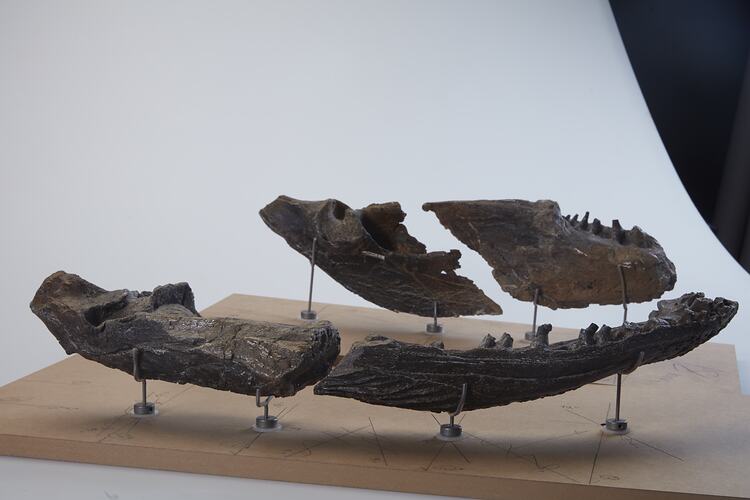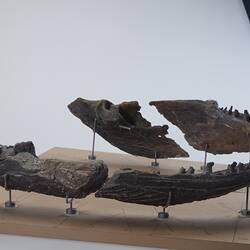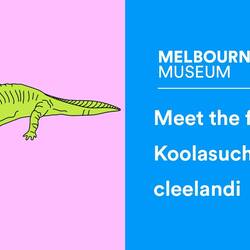Koolasuchus cleelandi is the state fossil emblem of Victoria. It is an extinct temnospondyl amphibian. It would have been several meters long from nose to tail, about the size of a saltwater crocodile, and probably looked rather like a large, scaly salamander. Koolasuchus had a wide head with large, conical teeth and would have been a top predator in the rivers it lived in.
It was found in 1990 near San Remo in Victoria. Koolasuchus cleelandi was named after Michael Cleeland who found the jaw that became the holotype of the species and Lesley Kool who spent months preparing the specimens. Koolasuchus is also something of a play on words as this species lived in a cool environment. The rocks Koolasuchus was found in were deposited during the Early Cretaceous (around 125 million years ago) in what would have been a large flood plain in a rift valley that formed as Australia was separating from Antarctica. At that time Victoria was within the Antarctic circle and the climate would have been cool, though the entire planet was warmer in the Cretaceous so the polar climate would have been warmer than the poles today. Temnospondyls first appeared in the Early Carboniferous (around 360 million years ago). Their diversity peaked in the Early Triassic (around 250 million years ago) and then declined through the rest of the Triassic. The group almost disappeared by 200 million years ago and until Koolasuchus was discovered the latest temnospondyl known was from the Early Jurassic. Found in rocks just 125 million years old, Koolasuchus extended the known range of temnospondyls by 50-60 million years. Discovering that temnospondyls had lived on so much longer in Australia than anywhere else in the world changed our understanding of the group's evolutionary history. The cool, polar environment Koolasuchus lived in may explain why temnospondyls survived longer in Australia than elsewhere. They appear to have been filling an ecological role similar to crocodilians which can't survive in such cool conditions. There are no crocodilian fossils in the rocks that Koolasuchus was found in, but only 10 million years later when the climate was warmer crocodilian fossils are found and Koolasuchus is not. It is likely that crocodilians invaded the area as the climate warmed and displaced these last known temnospondyls. Koolasuchus cleelandi was one of eight candidates for Victoria's fossil emblem in 2021 and on 13 January 2021 the Victorian Government announced that it had been selected as the Victorian state fossil emblem.More Information
-
Keywords
-
Authors
-
Article types





